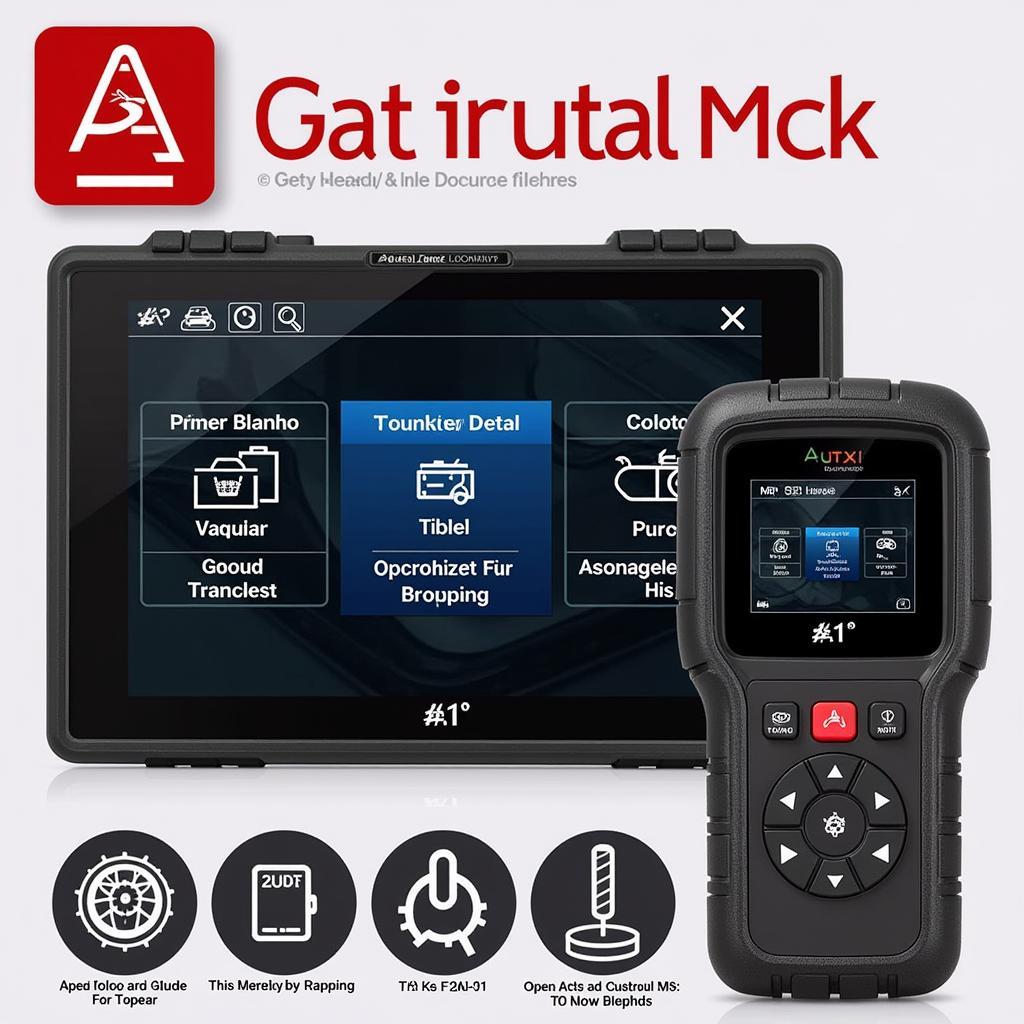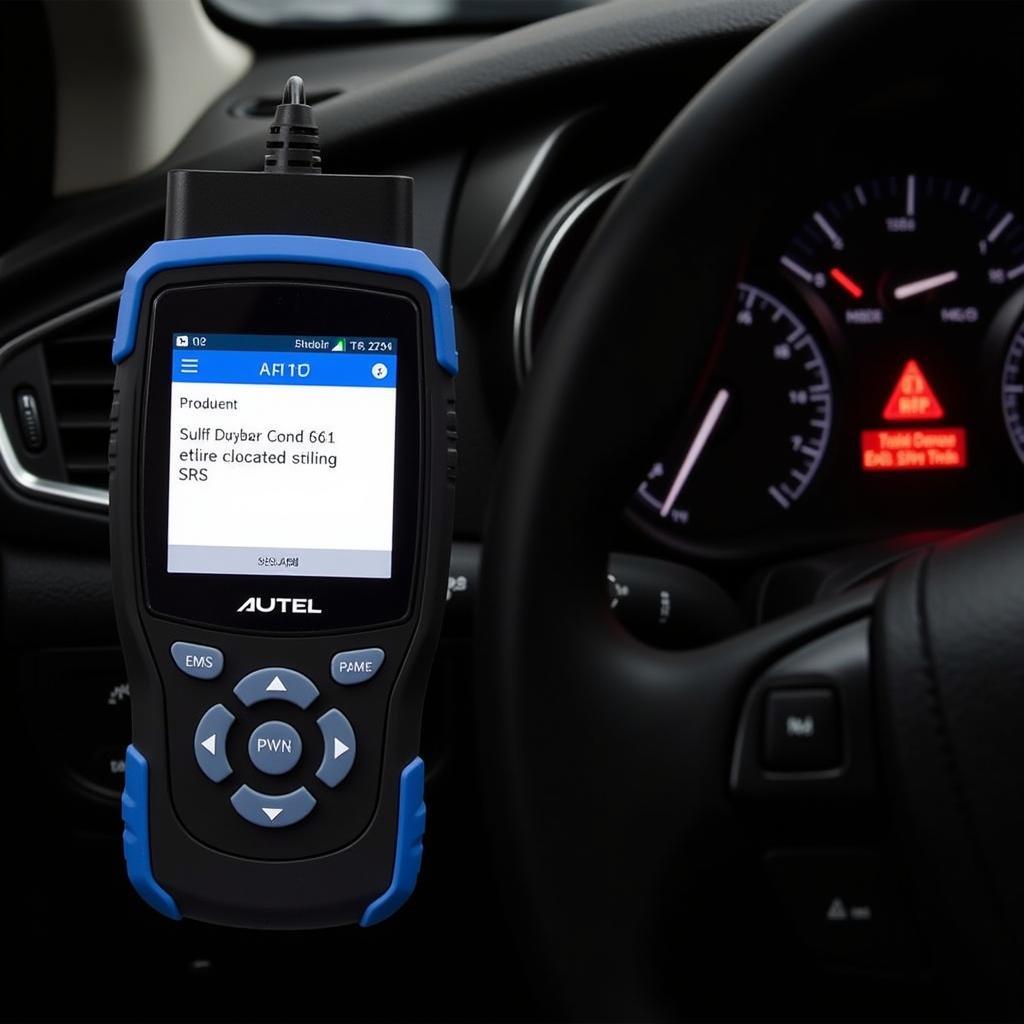The Autel Cylinder Contribution Test is an invaluable tool for auto technicians to diagnose misfires and other engine performance issues. This test helps identify which cylinders are contributing properly to the engine’s power output and which ones are malfunctioning. By analyzing the data from the cylinder contribution test, you can pinpoint the root cause of a problem and provide effective repairs.
What is a Cylinder Contribution Test?
The Autel Cylinder Contribution Test is a diagnostic procedure that measures the power output of each cylinder in an engine. By comparing the power contribution of each cylinder, you can determine if any cylinders are misfiring or operating below their normal performance level. This test is performed using a diagnostic scanner, such as the Autel MaxiScan MS300, which can communicate with the engine control unit (ECU).
How does the Cylinder Contribution Test Work?
The Autel Cylinder Contribution Test relies on the ECU’s ability to monitor engine parameters, including crankshaft position, fuel injection, and spark timing. By analyzing these parameters, the ECU can calculate the power output of each cylinder. The test results are displayed on the diagnostic scanner, showing the percentage of power contributed by each cylinder.
Why Use a Cylinder Contribution Test?
Autel Cylinder Contribution Test is a valuable tool for diagnosing a wide range of engine issues, including:
- Misfires: Identifying which cylinders are misfiring is the first step towards addressing the issue.
- Engine Stalling: This test can reveal if a cylinder is not contributing enough power to maintain engine operation.
- Reduced Power: A cylinder that is not contributing properly can lead to a loss of engine power.
- Rough Idle: Uneven power contribution from the cylinders can cause an engine to idle roughly.
- Increased Fuel Consumption: A misfiring cylinder can cause the engine to burn more fuel than necessary.
How to Perform a Cylinder Contribution Test with an Autel Scanner
Here’s a step-by-step guide on how to perform a Cylinder Contribution Test using an Autel scanner:
- Connect the Scanner: Connect the Autel scanner to the vehicle’s diagnostic port (OBDII port).
- Select the Vehicle: Choose the correct make, model, and year of the vehicle from the scanner’s menu.
- Access the Engine Data: Navigate to the engine data section of the scanner’s menu.
- Select Cylinder Contribution Test: Locate and select the Cylinder Contribution Test option.
- Start the Engine: Start the engine and allow it to warm up to operating temperature.
- Review Test Results: The scanner will display the percentage of power contributed by each cylinder.
Interpreting Cylinder Contribution Test Results
The Autel Cylinder Contribution Test results are usually displayed as a percentage of power contribution for each cylinder. A healthy cylinder typically contributes between 90% and 100% of its potential power output. Any cylinder with a significantly lower percentage may indicate a problem.
“The Autel Cylinder Contribution Test is a powerful diagnostic tool that can save you time and effort by identifying the root cause of engine performance issues,” says John Smith, a certified automotive technician with over 20 years of experience. “This test helps narrow down the possibilities and ensures you address the correct component for a fast and efficient repair.”
Common Causes of Cylinder Contribution Issues
Here are some common causes of cylinder contribution problems:
- Spark Plug Issues: Worn-out or faulty spark plugs can prevent the cylinder from firing properly.
- Ignition Coil Malfunction: A faulty ignition coil can prevent the spark plug from receiving the necessary electrical signal.
- Fuel Injector Problems: Clogged or leaking fuel injectors can restrict fuel delivery to the cylinder.
- Valve Problems: Worn-out, damaged, or improperly adjusted valves can affect the cylinder’s ability to intake air and exhaust gases.
- Compression Issues: Low cylinder compression can indicate problems with the piston rings, cylinder head, or other internal engine components.
Troubleshooting Cylinder Contribution Problems
Once you have identified a cylinder with a low power contribution, you can begin to troubleshoot the issue. Here are some general steps:
- Inspect Spark Plugs: Visually inspect the spark plugs for signs of wear, damage, or carbon buildup. Replace any faulty spark plugs.
- Check Ignition Coils: Inspect the ignition coils for cracks, corrosion, or other signs of damage. Perform a resistance test to ensure the ignition coils are operating within the correct range.
- Inspect Fuel Injectors: Visually inspect the fuel injectors for leaks or signs of clogging. If necessary, perform a fuel injector cleaning or replacement.
- Perform Compression Test: Conduct a compression test on the cylinder to determine if it is losing compression. If the compression is low, further inspection of the engine’s internal components may be required.
FAQs:
Q: What are some other tests that can be used to diagnose engine problems?
A: Other tests include:
- Fuel Pressure Test: Measures the pressure of fuel in the fuel line.
- Fuel Injector Flow Test: Checks the flow rate of fuel from each injector.
- Smoke Test: Helps to identify intake manifold leaks.
- Exhaust Gas Analysis: Measures the levels of pollutants in the exhaust gas.
Q: Can the Autel Cylinder Contribution Test be used on all vehicles?
A: The Autel Cylinder Contribution Test is available on most modern vehicles equipped with OBDII ports. However, some older vehicles or specific engine types may not support this test.
Q: How often should I perform a Cylinder Contribution Test?
A: There’s no set schedule for performing a Cylinder Contribution Test. However, it’s generally recommended to perform this test if you suspect engine performance problems or as part of a regular vehicle maintenance routine.
Q: What are some other common engine performance problems?
A: Some other common problems include:
- Check Engine Light: Indicates an issue with the engine control system.
- Rough Running: The engine may run rough, especially during acceleration or idle.
- Loss of Power: The engine may feel sluggish or lack power.
- Excessive Smoke: The exhaust may emit excessive smoke, indicating a problem with combustion or oil consumption.
Conclusion
The Autel Cylinder Contribution Test is a valuable tool for auto technicians to diagnose engine performance problems. By understanding how to perform this test and interpret the results, you can effectively troubleshoot misfires, identify faulty cylinders, and ensure that your customers’ vehicles are running smoothly. If you’re looking for a comprehensive guide to Autel products, you can visit DiagXcar.com.
Need help with your Autel diagnostic scanner? Our team of experts is available 24/7 to assist you. Reach out to us via WhatsApp: +1(641)206-8880, Email: [email protected] or visit us at: 276 Reock St, City of Orange, NJ 07050, United States.


